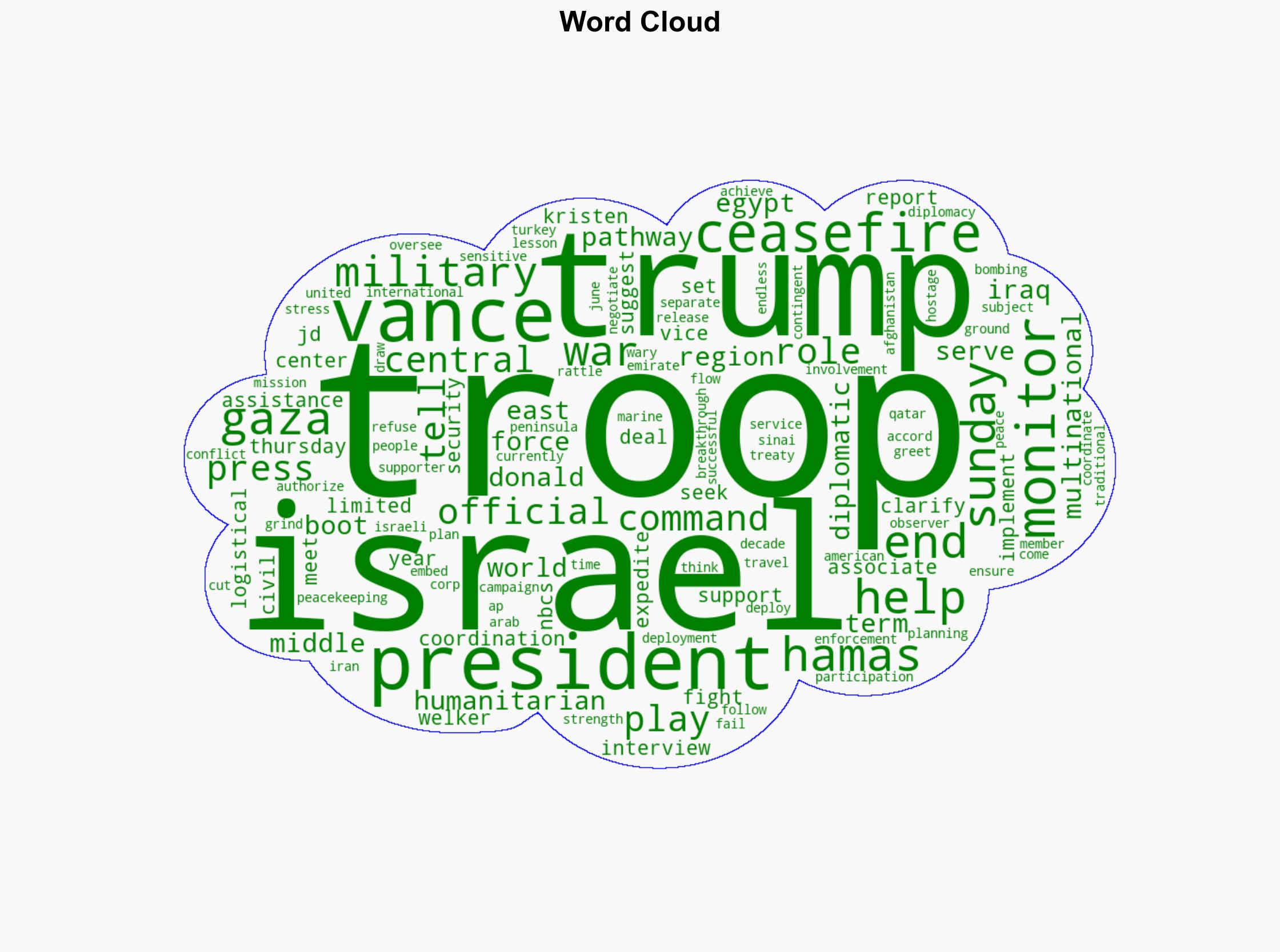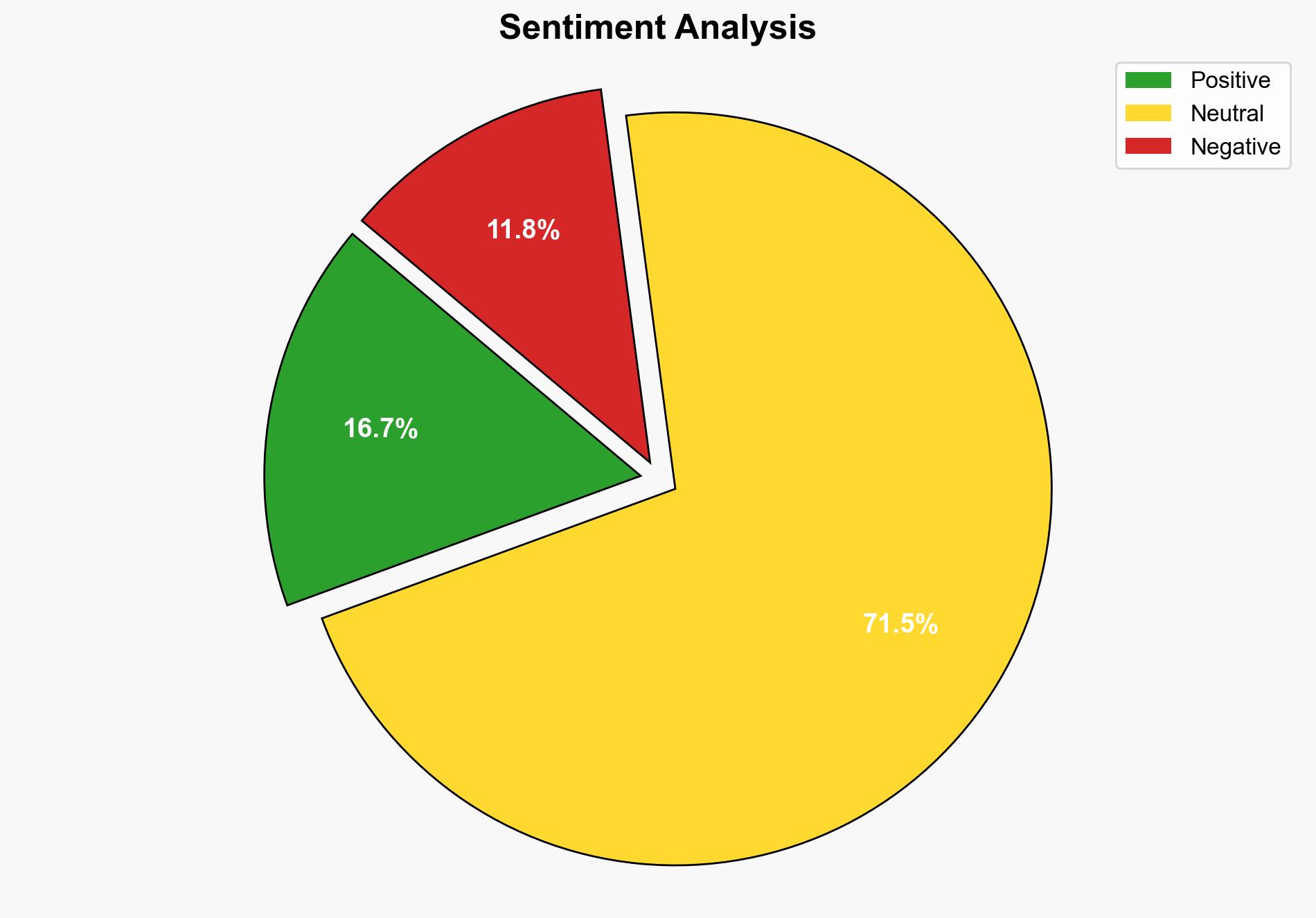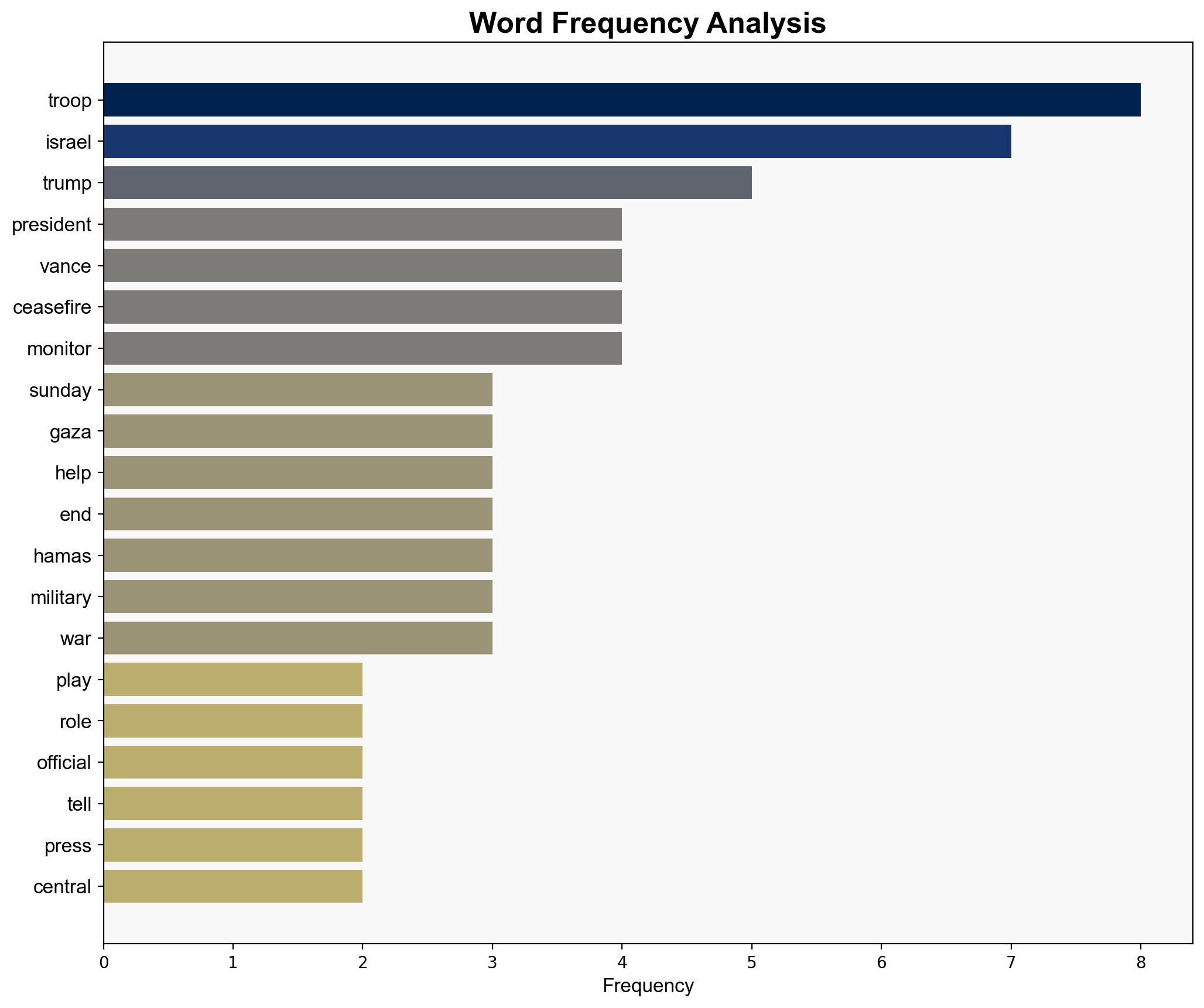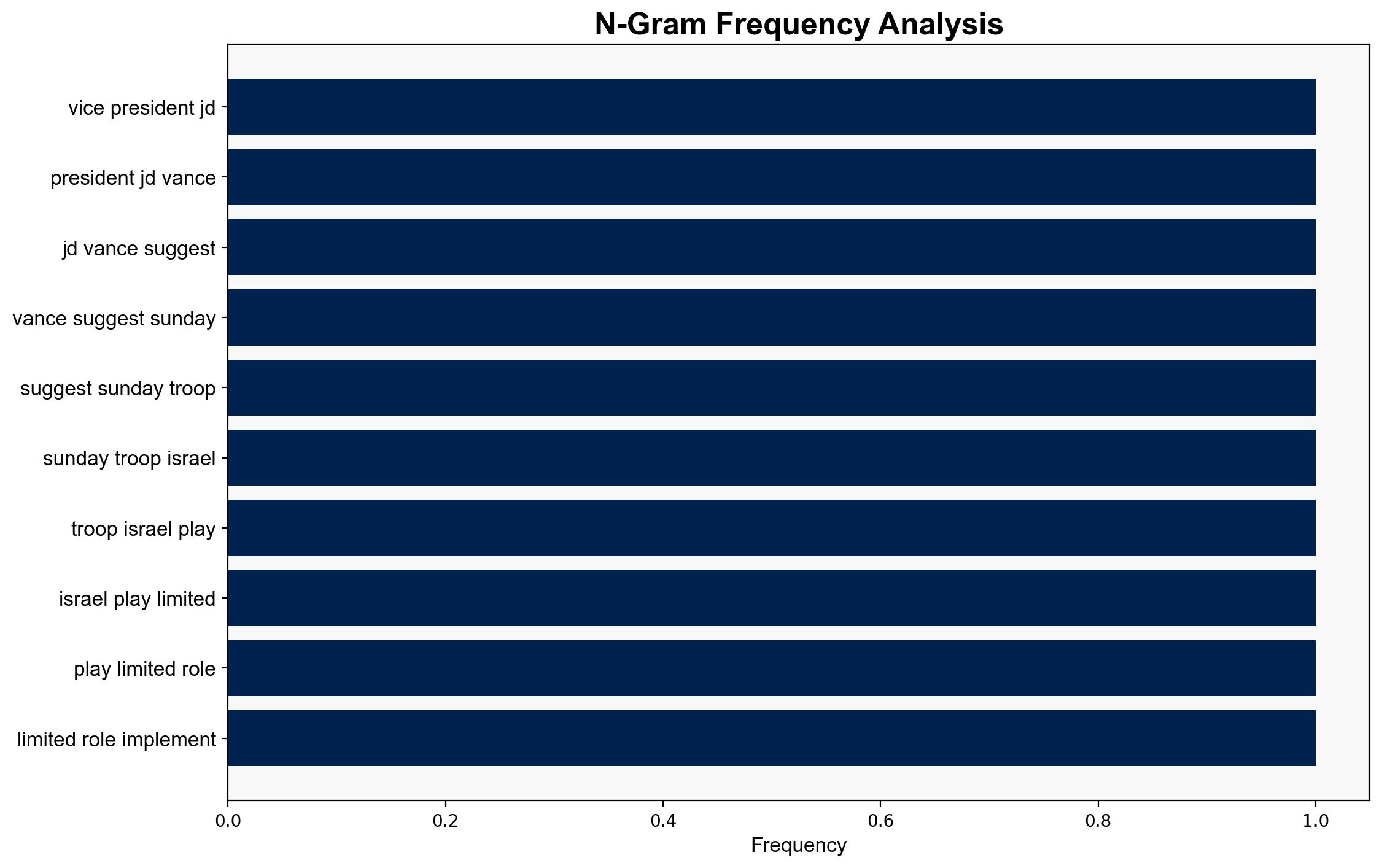US troops are going to Israel to support the Gaza ceasefire but JD Vance vows no boots on the ground – Fortune
Published on: 2025-10-12
Intelligence Report: US troops are going to Israel to support the Gaza ceasefire but JD Vance vows no boots on the ground – Fortune
1. BLUF (Bottom Line Up Front)
The most supported hypothesis is that US troops will play a limited, non-combat role in Israel to support the Gaza ceasefire, aligning with JD Vance’s statement of “no boots on the ground.” This is based on structured analysis using ACH 2.0, which highlights logistical and monitoring roles rather than combat deployment. Confidence level: Moderate. Recommended action: Monitor developments closely for any shifts in military engagement or political rhetoric that could alter the current understanding.
2. Competing Hypotheses
1. **Hypothesis A**: US troops will be deployed in a limited, non-combat capacity to support and monitor the Gaza ceasefire, consistent with JD Vance’s assurances of no combat roles.
2. **Hypothesis B**: Despite public statements, US troops may become involved in more direct military roles due to unforeseen escalations or strategic shifts, contradicting JD Vance’s assurances.
Using ACH 2.0, Hypothesis A is better supported by the intelligence, which emphasizes logistical and monitoring roles, and aligns with historical precedents of US involvement in peacekeeping without direct combat.
3. Key Assumptions and Red Flags
– **Assumptions**: The primary assumption is that the US will adhere to a non-combat role as stated. Another assumption is that the ceasefire will hold, reducing the need for combat involvement.
– **Red Flags**: The potential for escalation in the region could necessitate a shift in the US role. Political pressure or changes in leadership could also alter the current stance.
– **Blind Spots**: Lack of detailed information on the rules of engagement for US troops and the potential for mission creep.
4. Implications and Strategic Risks
– **Geopolitical**: Increased US presence could strain relations with regional actors opposed to US involvement.
– **Military**: Risk of mission creep leading to deeper military engagement.
– **Psychological**: Domestic and international perceptions of US military involvement could shift, impacting diplomatic relations.
– **Economic**: Potential impact on defense spending and resource allocation.
5. Recommendations and Outlook
- Continue diplomatic efforts to reinforce the ceasefire and reduce the likelihood of escalation.
- Enhance intelligence gathering to monitor regional dynamics and potential threats.
- Scenario Projections:
- Best: Ceasefire holds, US troops remain in a non-combat role, enhancing regional stability.
- Worst: Escalation leads to direct US military involvement, increasing regional tensions.
- Most Likely: US maintains a limited role, supporting ceasefire monitoring and humanitarian efforts.
6. Key Individuals and Entities
– JD Vance
– President Donald Trump
– Associated Press (as a reporting entity)
7. Thematic Tags
national security threats, cybersecurity, counter-terrorism, regional focus





